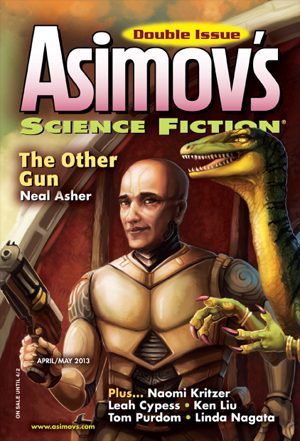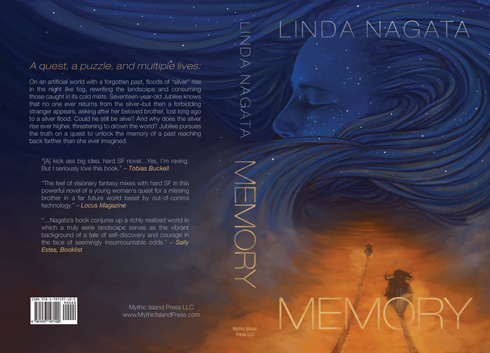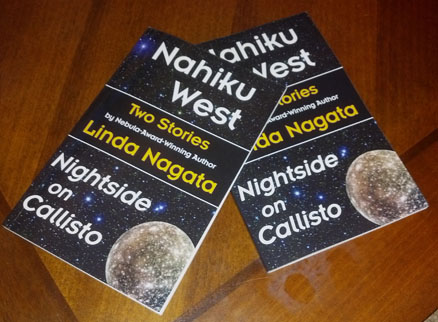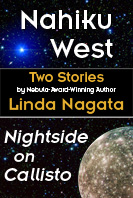Brainstorming Story Ideas
It’s not unusual to hear a speculative fiction writer say something like “I have so many story ideas I could never use them all.â€
That writer is not me. For me, it’s more like “I have only a few ideas, and I use them all.â€
I don’t have a library of story ideas floating around in my head. At best, I might have vague concepts, or some intentionality, but I have to hunt down the actual story idea. For example, “Nightside on Callisto†exists because I wanted to write a story set among the moons of Jupiter. No other reason. I had no character, no story background, no conflict, no goal. I just wanted to write a story in that setting, so I did some research, narrowed down the setting to Callisto, and started brainstorming.
Fast forward to last November: nearly six months had passed since I’d last written a short story so, to generate more story ideas, I decided to initiate a new writing exercise. I made a folder on my laptop called “Creative Oxygen.†Then I opened up a Word doc, saved it with the day’s date (20121109.docx for example, if proper sort order is one of your obsessions), and started writing.
The goal is to come up with a story synopsis — any story at all, no genre limitations, but figure out all the pieces: character, setting, story problem, beginning, middle, end.
The rule is non-stop writing sessions of ten minutes, fifteen minutes, maybe even twenty minutes. It’s not quite Write-or-Die, but very similar. Being obsessive, I actually set the alarm on my phone to go off after ten minutes. If I feel like continuing after the alarm, of course I do. If I want to take a break because I’m not getting anywhere, I do that too, comforting myself with the thought that at least I’m trying.
I use the “directed brainstorming†method, asking and answering questions, making statements and requests, evaluating what I’ve come up with, reiterating it in a clearer form, and asking myself over and over again, “So where’s the story? Is this a story?†And if nothing is coming, I just start typing in random things.
Hey, it works for me. Not all the time, of course, but often enough that I’ve used directed-brainstorming almost from the beginning of my writing career, usually to figure out the next chapter.
So anyway, I managed to do the creative oxygen exercise for all of three days in November, but those three days produced two story synopses. Then I went back to work on the novel and forgot about creative oxygen…until the end of the year when I was challenged to write one more story before we moved into 2013. So I pulled out one of the two story ideas — the one with the most solid, detailed synopsis — and wrote it. That turned into “Halfway Home,†which just sold to Nightmare Magazine.
The wild-eyed ideal would be to brainstorm a story synopsis every day — although a synopsis every week is probably more reasonable – but at any rate, to keep hammering at it, knowing you don’t have to actually write every story you come up with. It’s just that by pushing yourself and practicing creativity your ideas are likely to get better and better, until you come up with a synopsis that simply demands to be written into a story.
It’s a theory anyway. If you’re looking to generate ideas and develop them into stories, it might be worth a try.
 This is a follow-up to my post from yesterday. My newest short story, “Through Your Eyes,” is now out in the April/May double issue of Asimov’s. Find the ebook edition at Amazon and Barnes & Noble. Print editions should be on the way.
This is a follow-up to my post from yesterday. My newest short story, “Through Your Eyes,” is now out in the April/May double issue of Asimov’s. Find the ebook edition at Amazon and Barnes & Noble. Print editions should be on the way. 









 Lieutenant James Shelley commands a high-tech squad of soldiers in a rural district within the African Sahel. They hunt insurgents each night on a harrowing patrol, guided by three simple goals: protect civilians, kill the enemy, and stay alive—because in a for-profit war manufactured by the defense industry there can be no cause worth dying for. To keep his soldiers safe, Shelley uses every high-tech asset available to him—but his best weapon is a flawless sense of imminent danger…as if God is with him, whispering warnings in his ear. (Hazard Notice: contains military grade profanity.)
Lieutenant James Shelley commands a high-tech squad of soldiers in a rural district within the African Sahel. They hunt insurgents each night on a harrowing patrol, guided by three simple goals: protect civilians, kill the enemy, and stay alive—because in a for-profit war manufactured by the defense industry there can be no cause worth dying for. To keep his soldiers safe, Shelley uses every high-tech asset available to him—but his best weapon is a flawless sense of imminent danger…as if God is with him, whispering warnings in his ear. (Hazard Notice: contains military grade profanity.)